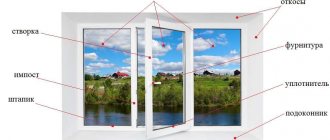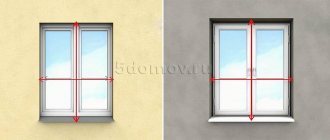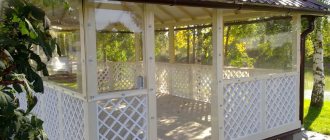Glass is an inorganic, durable, brittle, impermeable to natural elements, transparent or translucent material that is used in many areas of our daily lives. The talented glaziers and designers at Eraglass work with glass every day and take its unique qualities for granted. Here are some interesting facts about this material.
Glass composition
Glass is made from natural raw materials that melt at a very high temperature. The main ingredient of glass is sand, but technically the main ingredient is the sand component - quartz, aka silicon dioxide (SiO2), silica or quartz sand.
Quartz is combined with other ingredients, which may vary. These are elements such as:
- soda ash (sodium carbonate);
- dolomite (a mineral from the carbonate class);
- limestone (calcium carbonate);
- cullet (recycled glass);
- other chemicals (metal oxides, cobalt).
Glass is produced by cooling molten components at temperatures between +300 and +2500 °C, at a rate sufficient to prevent the formation of visible crystals. Sand alone is enough to make glass, but the temperature required to melt it will be much higher. For this reason, soda is added as a modifier. Limestone makes it more durable. The optimal composition is about 75% silica, 10% lime and 15% soda.
Silicate glass
Glass compositions are designed to exhibit its various physical, chemical and optical properties. The variety of applications requires specific glass types and manufacturing processes. In industrial production, several compositions are usually used. We will briefly discuss silicate glass.
Silicate glass is a common glass that is found everywhere. The list of products is almost endless: from dishes, decorative objects, glasses, laboratory vessels, incandescent lamps, windows and hundreds of other items that we directly or indirectly use in our daily lives.
Main types:
- soda-lime;
- potash-lime;
- potassium-lead.
Industrial glass is divided into construction glass, technical glass, electric vacuum glass, container glass, laboratory glass, safety glass, optical glass, and grade glass.
Production raw materials
In glass production, the following chemicals can be used as the main material: oxides, fluorides or sulfides. The classical, most common technology involves the use of quartz sand as the main ingredient (up to 70% of the total mass), containing a large amount of silicon oxide SiO2. Dolomite and limestone, as well as sodium sulfate, are used as additional components.
Glass-forming oxides are added to the mixture as a catalyst and accelerator for the glass formation process. In addition, to give the glass produced certain required properties, additional components are introduced into its composition - tinting materials made on the basis of manganese, cobalt, chromium; clarifiers made from nitrate or arsenic oxide.
Depending on the main glass-forming raw materials and additional components, the following types of glass are available:
- Silicate. Their production is based on silicate oxide SiO2. The main variety used today everywhere in everyday life and in industry. These are window and car glass, mirrors, TV screens and computer monitors.
- Sodium-calcium. This type of glass is also called “soda” or “crown glass”, and is distinguished by its ease of melting and softness, which makes it easy to process. Often used for the manufacture of small parts of complex designs, or in decorative arts.
- Potassium-calcium, or potash. Characterized by refractoriness and hardness. The production of potash glass required a large amount of wood, the main raw material for potash. To get one kilogram of potash it was necessary to burn a ton of trees, so this type of glass was also called “forest glass.” Until the 18th century in Russia, potash glass was the main type produced by the domestic glass industry.
- Lead. In everyday life, this type of glass is better known as “crystal”. The production of crystal differs from traditional technology by introducing lead oxide into the composition as an additional component. The result is heavy glass products that have a bright shine and the ability to dispersion—the decomposition of a light beam into individual components. As a result, when passing through the crystal, the light begins to play with all the shades of the rainbow.
- Borosilicate. It is characterized by high mechanical resistance to various aggressive influences: refractoriness, immunity to acidic and alkaline environments, sudden changes in temperature. This is achieved by introducing boron oxide into the glass mass during the manufacturing process. The cost of borosilicate glass is higher than that of simple silicate glass, but its high mechanical properties more than compensate for this disadvantage. Used for the manufacture of medical and laboratory glassware.
Glass structure
Glass can be formed naturally; for example, in volcanoes or when lightning strikes a sandy beach, and it has been produced by humans for thousands of years. Thus, it may be surprising that our understanding of the exact structure of glass is not complete even after so long. Very often glass is referred to as amorphous. This word comes from Greek and means “without form.” So we have a rough idea that glass is somehow shapeless.
The structure of glass has not yet been definitively established. There are discrepancies even between its main mass and the surface layer. This is due to the fact that different glasses have different compositions. In addition, its structure is influenced by the technological process.
Arrangement of atoms in glass
Left: crystalline form, right: amorphous form.
Glass has a mystical quality to it, probably due to its strange chemical and physical behavior. It is strong enough to protect us, but can break into thousands of pieces. It is made of opaque sand, but is completely transparent. And perhaps most strikingly, it looks and behaves like a solid, but is actually a disguised form of a strange liquid. As a result, it can be poured, blown, pressed and molded.
Molding technology
The next step is to obtain a workpiece of a certain shape from the melt. Most often, this is sheet glass of a certain thickness and linear size. The modern glass industry has two technologies for producing sheet glass:
- Fourcauld method;
- Float method.
Fourcauld method
Fourcaud's technology received its name in honor of the French inventor who first introduced this method into production at the beginning of the twentieth century. This technology is based on the method of gradually drawing molten glass from a glass furnace through special rollers. As a result of continuous rolling of the glass mass, a long sheet was obtained. As it was drawn out, the melt entered a special chamber, where it was gradually cooled by blowing heated air.
Then the cooled glass tape is cut into sheets of the required size using special glass-cutting machines. The thickness of the glass sheet is adjusted by changing the speed of drawing the melt from the furnace. Due to the peculiarities of its manufacture, such glass was called “drawn”. Glass production using the Fourcaud method, despite its technological backwardness, is still used today. True, this technique is increasingly losing its position in the glass industry to another technology - the float method.
Float method
The production of sheet glass using the float method is a more modern method than the drawing technology. The name of this method comes from the English word “float”, which means “to float”. The inventor of this technique is considered to be the British glass industry, which was the first to develop and introduce into production this method of producing sheet glass. A little more than half a century has passed since the invention of the float method, but today it has become the main technology, replacing the Fourcaud pulling method everywhere.
A special feature of this method is the production of sheet glass by molding it on the surface of a metal melt. From the melting furnace, liquid glass is poured into a bath filled with molten tin. The glass melt, being lighter than tin, spreads over its surface, gradually solidifying. This is achieved by the fact that the melting point of tin is much lower than that of glass - a glass sheet is formed on the surface of liquid tin. Its thickness is determined by a certain volume of liquid glass poured into the bath, and the configuration of the sheet is determined by the shape of the bath itself. The production of sheet glass using the float method is today the main technology in the glass industry not only in Russia, but throughout the world.
Special types of glass
There are different types of glass used for different purposes. The development of the glass industry and the production of multifunctional glasses make it possible to solve architectural problems in Eraglass building structures, as well as to exploit opportunities for special technical and scientific applications.
Flat glass
Flat or sheet glass is most common in windows, doors, auto glass, mirrors and solar panels. It is made by spreading liquid glass to the desired thickness and cooling it into the final product. Then it can be bent.
Double-glazed window
combines several glass panels into a single window system. Most have double or triple glazing. The glass sheets in insulating glass units are separated by a gasket and a stationary layer of air or vacuum.
Wall glass blocks
Glass blocks are made from two different halves that are pressed and annealed together during the glass melting process. They are used for architectural purposes in the construction of walls, skylights, etc. They provide an aesthetic appearance when light passes through.
Armored
Bulletproof glass has many uses in a variety of industries, including construction. It is made of laminated glass made using special technology. Armored glass is used in buildings that require security, such as jewelry stores, banks and embassies.
Quartz
It is a one-component material that is one of the most valuable materials for science and industry. The raw material is a natural crystal extracted from the earth in the form of rock crystal or pegmatite quartz. It is crushed to fine granules and melted. Used for the manufacture of precision mechanics parts (quartz watches), ultraviolet lamp flasks, chemical reagent containers, and laboratory equipment.
Glass ceramics
Glass ceramics were developed at Corning and share the properties of glass and polycrystalline materials. Initially used in mirrors and mounts for astronomical telescopes. It became famous for its glass-ceramic hobs, as well as cookware and high-performance reflectors for digital projectors.
Glass ceramics have an amorphous phase and one or more crystalline phases. It is produced by "controlled crystallization" (as opposed to spontaneous crystallization), which is not usually required in glass production.
Photosensitive glasses
Photosensitive glass, also known as photostructured or photosensitive glass, is a crystal clear glass that belongs to the lithium silicate family. Provides the ability to obtain an image by the formation of microscopic metal particles in glass after exposure to electromagnetic radiation. It is a very promising material for the production of components of complex microsystems.
Fiberglass
Molten glass is forced through ultra-fine holes, creating glass filaments. They can then be woven into large samples of material or left in a puffy substance used for heat or sound insulation. Fiberglass products include circuit boards, swimming pools, doors, surfboards, sports equipment, boat hulls and exterior automotive parts.
Liquid glass
Silicon-based coating or liquid glass is perhaps the most important nanotechnology product. It fills pores and imperfections and can protect any surface from any damage such as water, UV rays, dirt, heat and bacterial infections. The breathable coating is 500 times thinner than a human hair.
Crystal
Lead crystal glass is a special type of glass that is used to make various decorative items. When cutting the material, the optical phenomenon of total internal reflection occurs very sharply, and thus creates a pleasant dazzling shine.
Bohemian
Often called Bohemian crystal. This is glass produced in the regions of the Czech Republic and Silesia. It has a long history of being recognized throughout the world for its high quality, craftsmanship, beauty and innovative design. Features: hand cut, engraved, blown and painted decorative glass.
Glass is one of those magical materials that we take for granted, but it consistently serves the purpose for which it is intended, provided you use it with care!
Share
Manufacturing of glass products
Glass products can be divided into two large types. The first are those products that are produced on an industrial scale, the so-called glass containers, for example glass bottles, jars. The second large type is artistic products. This is the name for all products that are made by hand by glassblowers, such as vases, glass figurines, figurines, and the like. In the manufacture of glass products, industrial glass and any glass in general, the initial stage of production is always absolutely similar, until the glass mass is obtained. Only the components included in the charge, the melting temperature and subsequent processing of the resulting glass mass are different.
Production of industrial glass products
The finished glass melt from the furnace falls into a glass line, from which it flows out in the shape of a sausage and is cut into cylindrical drops with a cutter; one such drop is the future bottle or jar. The droplets are directed into what is called a scoop, which directs them into the molding machine. It works using the following method: holders take the drop by the edge and hold it in a hanging position, the entire lower part of the drop is closed on both sides with the desired shape, be it a jar or a bottle; the form can also have certain patterns. After the mold is closed, the holder is moved away and a blowing device is inserted into the drop. It, like a balloon, inflates the drop from the inside with compressed air and the mass takes on the desired shape. Excess molten glass returns to its original form.
By the way, to give the glass any color or shade, certain substances are added to the charge, for example, to give a green color, iron or chromium oxide is added, for blue, copper oxide, and so on.
Now almost finished products move along a heated conveyor, so that there is no sudden temperature change and the product does not crack. From this conveyor, a loading machine moves the products into a lehr, along which they move slowly and gradually cool. Here they are treated with a special solution that allows them to glide and move smoothly. And they move further to the checking and packaging line. After going through all the stages, we receive the finished product.
How art glass products are made
Art glass products are made from the same glass mass. The production of such products uses the same furnace, but the temperature for production is slightly lower than industrial ones, about 1200 degrees. The product itself is made by glassblowers. Glassblowers are like jewelers for glass; they can work alone, in pairs or even more.
Using a long tube, glassmakers take the required amount of hot glass directly from the furnace and immediately begin to shape it using various methods, while periodically blowing through the tube. In the process, you can add more material, for example, for some additional parts. Very small parts are made separately, also using different techniques.
After the details and general shape of the product are formed, it is placed in another kiln for 24 hours. As a rule, the temperature in the heated state is about 400 degrees; at night such an oven is turned off and the products in it gradually cool down to 70 degrees, thereby tempering and hardening.
Transportation and storage of glass products
Cassette systems for glass storage
Any glass product is marked. The stamp must indicate the name of the enterprise where the glass was made, trademark, article number, standard number, cutting group. If the product is made of crystal, the percentage of lead and barium oxides must also be indicated.
Transportation of glass products must be carried out in packaging that bears the inscription “Caution, glass”, etc.
Such products should be stored in dry rooms, since due to dampness a whitish coating may appear on its surface, and the glass will become less transparent.
Quality Standards
There are a huge number of types of glass. To determine the quality of each type, state standards have been created, which describe the properties and quality characteristics.
There are GOST standards for quartz, sheet, medical, multilayer, curved, inorganic, optical and other types of glass. They describe production technologies, brands, methods for determining quality, and classification.











